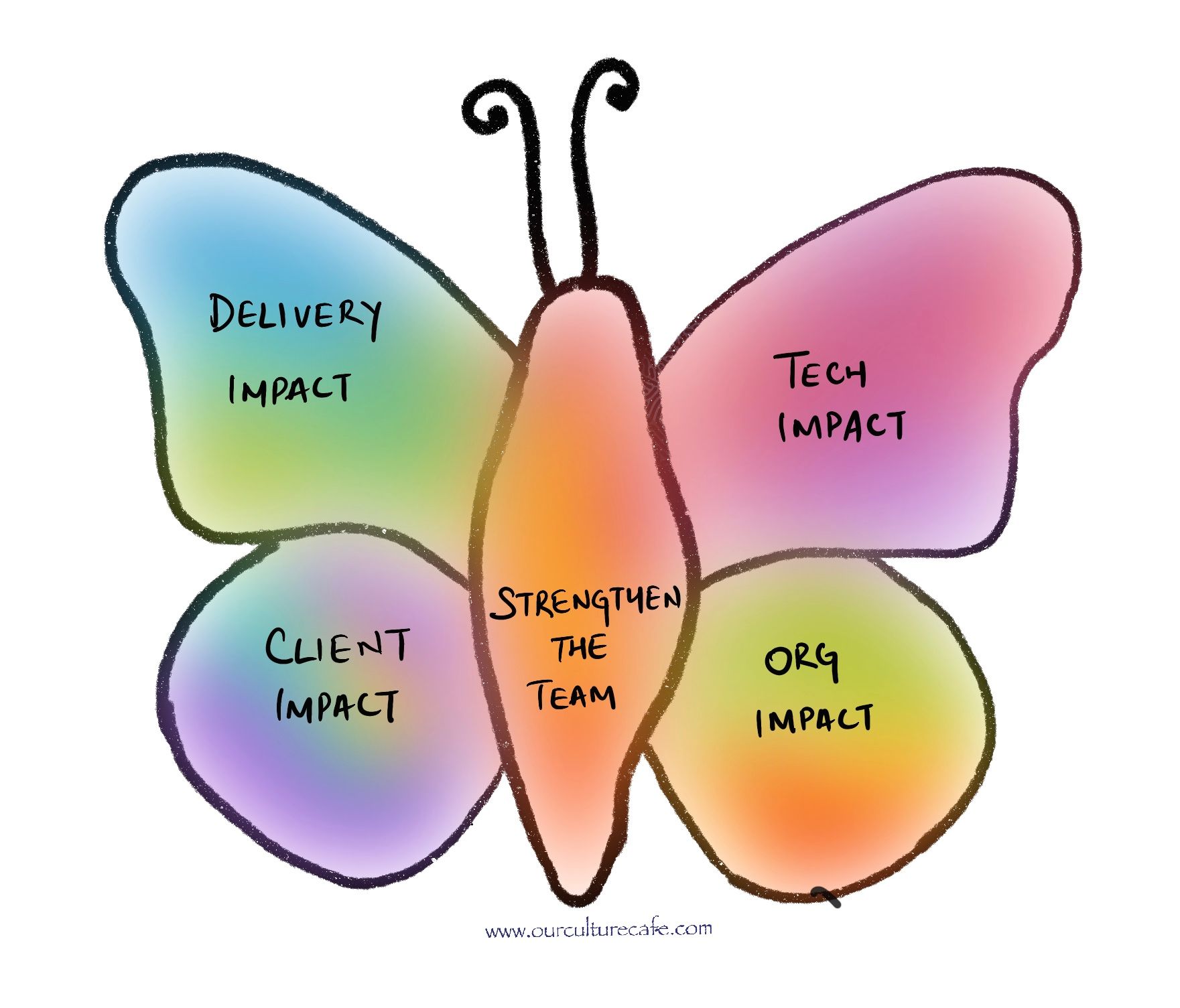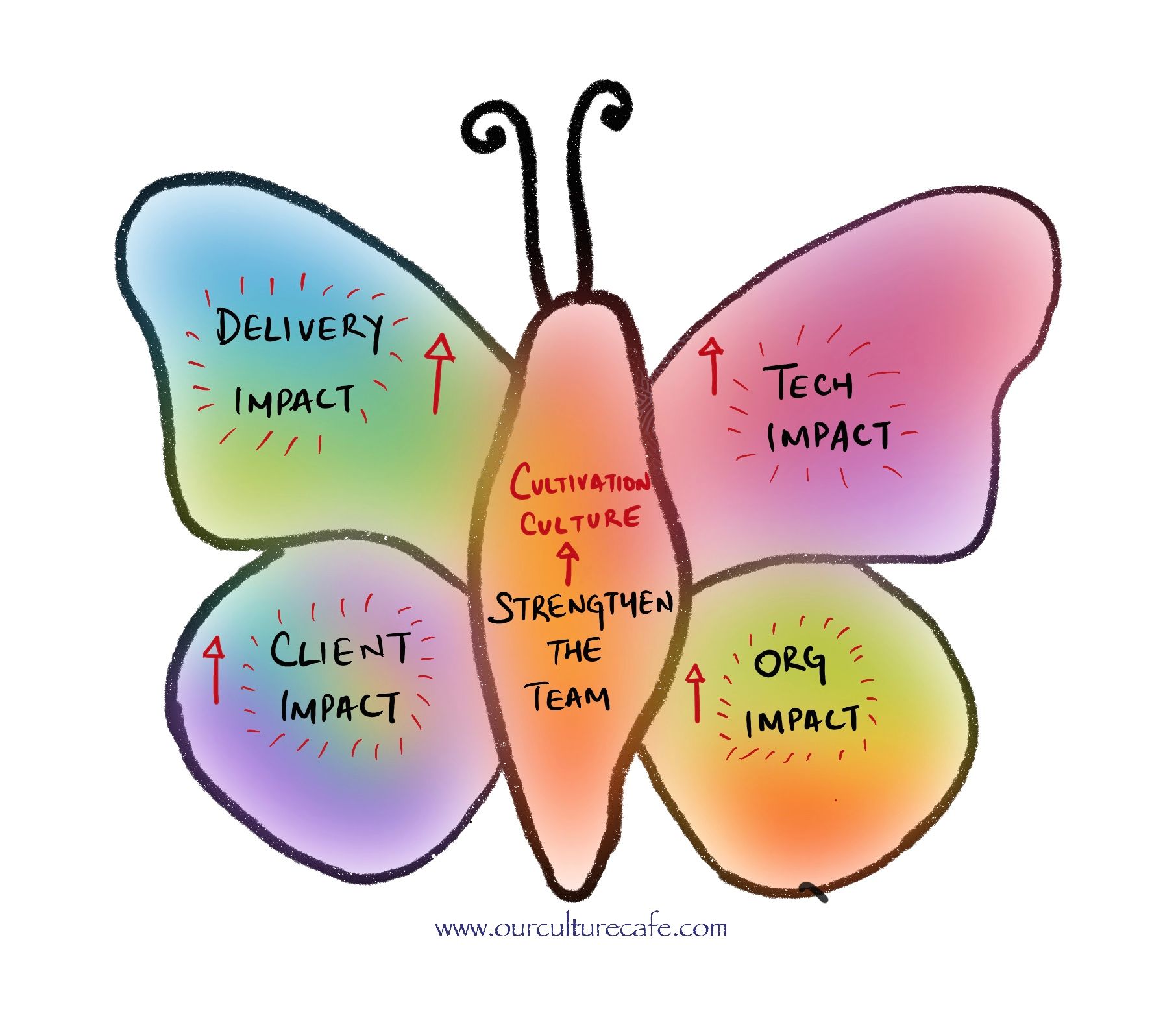Building a Cultivation Culture is the most important thing to do as a Team Lead

Creating a Culture of Cultivation on your team is the most impactful thing you can do as team lead. It’s an investment which keeps paying back for you and for all your stakeholders in the long term.
When a team builds a culture of Cultivation in the team, everyone benefits - starting from the individual team members to the team leads themselves. The client stakeholders benefit from it and so does the larger organization. Let’s take a closer look at how.
In this post, we’ll primarily see this from the lens of the leaders in a team.
Who is a Team Lead?
On an agile software development team, typically the Project Manager, Business Analyst and Lead Developer form the leadership group of the team. This may be formally stated it may be an informal, tacit assumption of the team. On some teams, depending on the context, the Quality Analyst along with roles like the Experience Designer or Data Scientist may also be part of this leadership group. In essence, there are multiple people in different roles that come together to form the team’s leadership. We refer to this group as a whole when we use the term “Team Lead” in this post.
We use the context of a software development team in the narrative of this post. But all of these ideas apply equally to other kinds of teams like recruitment or sales teams as well.
Responsibilities of a Team Lead

As a team lead it’s useful to look at the responsibilities that you carry on the team using what we call the Butterfly Model of Team Leadership. We use this model extensively in our internal Tech Leadership training. The model is based on the representation of a butterfly, with a core body and four wings. On the wings are four impact areas of team and thus the team leads for its stakeholders i.e Delivery Impact, Client Impact, Technology Impact and Organizational Impact.
Technology Impact
As a team lead, it is your responsibility to make the appropriate technology choices and the right technical decisions. This involves things like creating the right architecture, picking appropriate technology tools for the project, designing a proper test strategy, user experience etc. Of course, on an agile/XP team these decisions are made collectively so you get everyone’s inputs and take everyone along in the journey. But ultimately it is your responsibility as a team lead to get the technology right.
Delivery Impact
Along with helping to create the right technical infrastructure for the product, you also keep a keen eye on delivery commitments. It’s your responsibility to understand the client’s business, organisational context and constraints to co-create a delivery plan along with the client stakeholders. But a good plan is worth nothing if it doesn’t get executed well. So creating the conditions in which your team can achieve its delivery targets becomes an important responsibility that you hold as a team lead. On one hand, you have to keep reflecting and adapting the plan according to yesterday’s weather and changing business context; and on the other, you need to keep enabling the team to get stuff done smoother and faster.
Client Impact
Beyond delivering great software for the client, and keeping your delivery promises, as a team lead you also look to create impact for the client organization in wider ways. Examples of this are helping them make the right choices on their priorities or helping them spot and execute new business opportunities. Often clients also expect ThoughtWorks teams and thus you as a team leader, to help them in other ways such as:
- Help upskill the client staff
- Help make cultural shifts in their organization leading to better development practices
- Help create better collaboration between different parts of the client organization.
Organizational Impact
At ThoughtWorks, in addition to the above, you’re also expected to create internal, org wide impact. This can take many forms like:
- contribution to hiring new ThoughtWorkers
- sharing your knowledge within the ThoughtWorks community
- helping ThoughtWorks make an impact on the wider industry by writing blogs
- talking at conferences
- contributing to open source software etc.
As a team lead, you have the responsibility to make these kinds of contributions yourself. Additionally, you’re in a position to also influence your team members to engage with these organizational activities and create high impact as a team.
Now, at the centre of the butterfly model is the Team Leads responsibilities towards the team.
Strengthening the Team
As a team lead, there are two broad things that you can do to strengthen your team.
First is to create a culture of cultivation i.e. to create the conditions under which every team member can do their best and can continuously grow on the team. Second is to create conditions where team members can collaborate effectively with each other.
Cultivation Culture on a team equates to the team members exchanging feedback to help each other grow frequently. It involves people on the team learning from and with each other. It also involves the team and the leadership in particular being good at spotting and nurturing potential in their teams. And finally the team places high value on cultivation, they appreciate it when they see others engaging in cultivation activities.
When you focus on this one thing, you create an impetus for the other four areas of impact, consequently multiplying your impact as a team lead. The correlations are quite straightforward with the other areas of impact. Let’s have a look:
How Cultivation Culture multiplies the impact on all other areas

On Technical Impact: The quality of technical decisions made in a team,, will improve as the team members learn new knowledge & skills. Team members and you will be able to make better judgements if the team exchanges ideas & inputs freely & frequently.
On Delivery Impact: When people on the team constantly help each other re-affirm productive behaviors and correct negative ones by sharing feedback with each other, it improves their productivity. When they are encouraged to tap into their strengths and pick up more responsibilities that align with their aspirations, they can get more done for the team. A team with such an environment, is also likely to create a stronger affinity for the team members to stay on the team longer. This creates a huge payoff for the team in terms of increased confidence to tackle difficult problems and to meet their delivery plans.
On Client Impact: The impact on the client’s wider ecosystem increases for a team once the leaders on the team feel confident that they can deliver on their promises while keeping quality high. Team leads can spend more energy engaging in strategic conversations about the client’s ecosystem, once they are confident that the team can execute the day to day tasks well by themselves. Investing in cultivating your team members helps strengthen delivery on the team which in turn creates bandwidth for you and your team to create value beyond just delivering software.
On Organisational Impact: Once the team is confident of its ability to get stuff done predictably,consistently & with high quality, then they are freed up to be proactive in contributing to the Organization beyond their project work. When you focus on team members’ learning & growth, it raises the quality of work on the team. And that eventually allows you and the team to contribute their energies and skills to create lasting impact and value for ThoughtWorks.
Acknowledgements:
Akshay Dhavle has been our collaborator for the overall Cultivation Program Design.
Cover image: Photo by Perry Grone on Unsplash
References: Dan Abel’s article which inspired our Butterfly model.
Illustrations of the Butterfly model: by Our Culture Cafe




